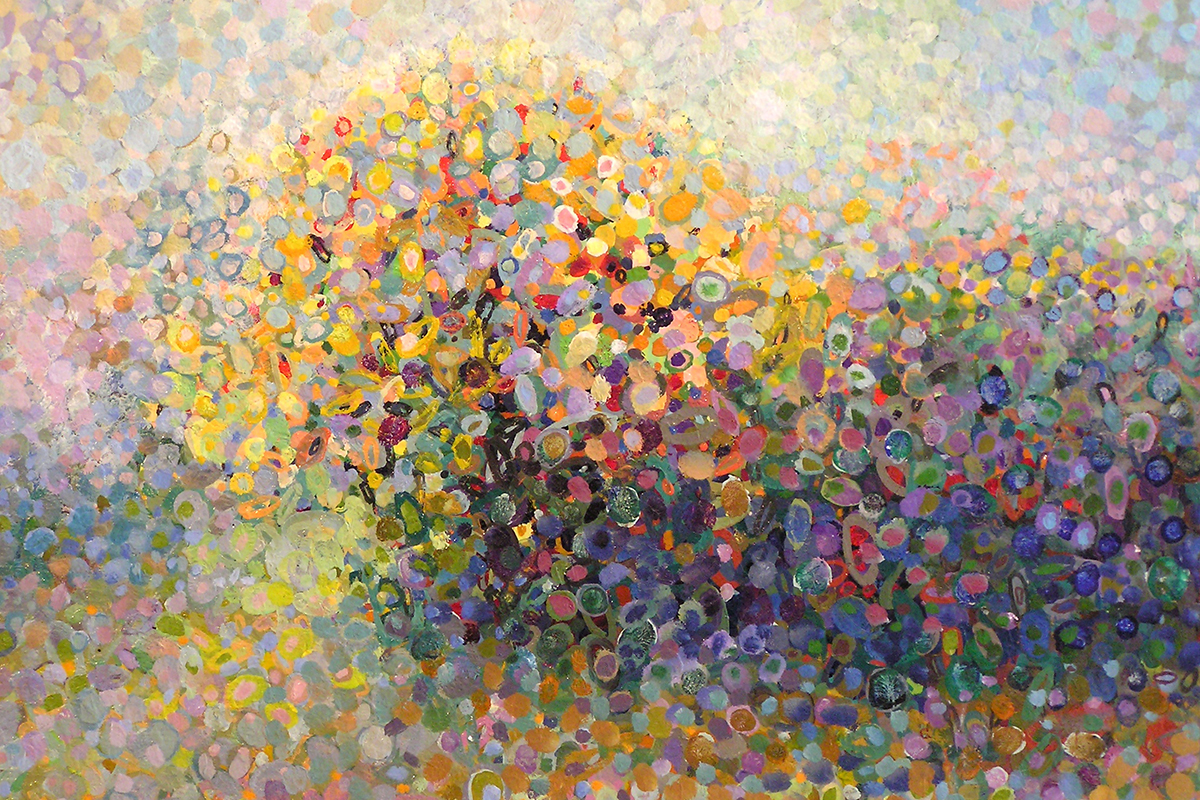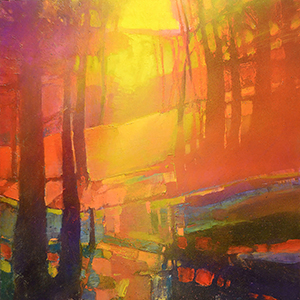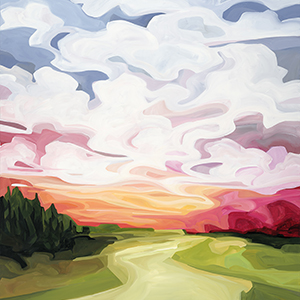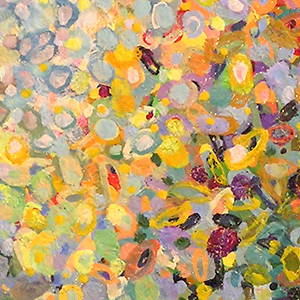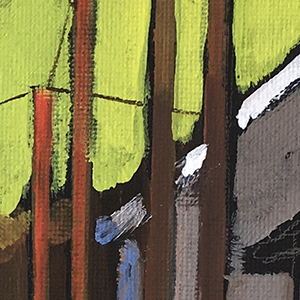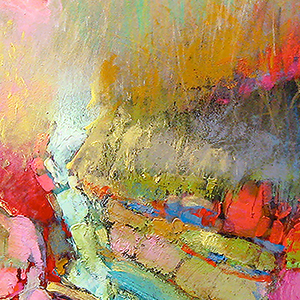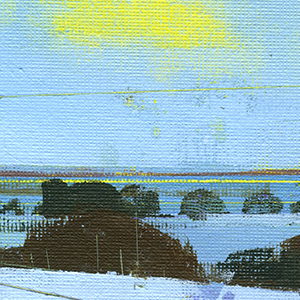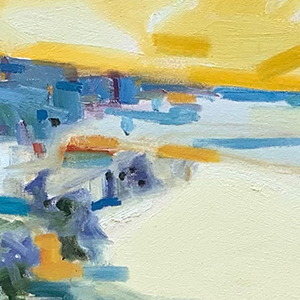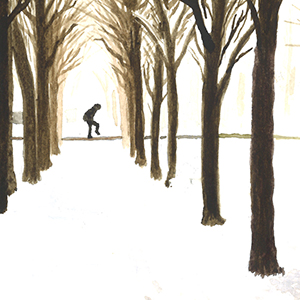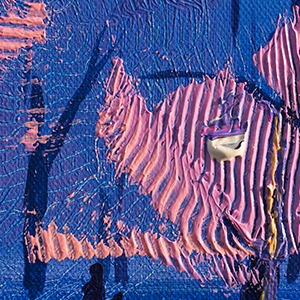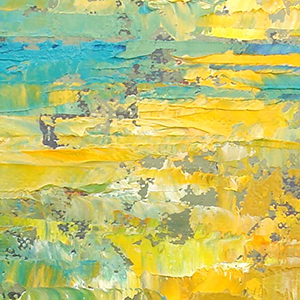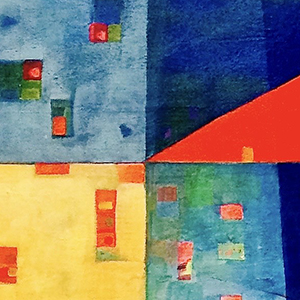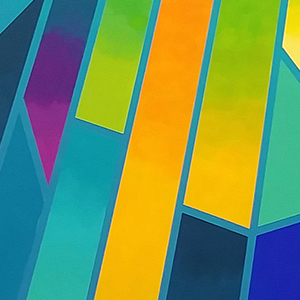In the spring of 1912, Tokyo’s mayor gifted Washington, D.C., with 3,000 cherry trees, an act of friendship that continues to transform the capital each year into a dreamy spectacle of pink and white. Every spring, these cherry blossoms breathe new life into the austere Washington, D.C., architecture. They put the city under a spell. I find myself enchanted as I walk past them on my university campus, grateful for their beauty and for being spared from the parking skirmish endured by the one-and-a-half million tourists who flock to see them every year. But the beauty of these blossoms is fleeting. Brief as a sunrise, ephemeral as a rainbow, they bloom for only a couple of weeks. Still, they’re more than just Instagram fodder. To the Japanese, as to many D.C. residents and even tourists, the fragile beauty of the cherry blossom is a sign of hope.
Hope is not merely an optimistic outlook on the future. Rather, it is a virtue. As philosopher Josef Pieper puts it, hope is the disposition of the human being in reaching “with confidence and patient expectation, toward the bonum arduum futurum, toward the arduous ‘not yet’ of fulfillment, whether natural or supernatural.”1 To hope is to trust in the promise of a good yet to come, even in the midst of uncertainty or adversity.
Beauty is a foretaste of the promised good, and a sign that hope is not in vain. Beauty, as the attractive power of being, draws us in, inviting us to gaze upon it and delight in it. It also wounds us, stirring within us a longing for the Infinite. In this light, we see that beauty is not a fleeting distraction but rather a signal that points beyond our self-enclosed worlds to something beyond. Beauty, like hope, is oriented towards the future. It can delight us through joy, pierce us through sorrow, and impel us to justice.
Hope in Joy
Even seemingly trivial encounters with beauty have the potential to evoke such hope. When I was a child of around eight, struggling at school to avoid punishments doled out by capricious teachers, and struggling at home to make sense of my mother’s episodes of schizophrenia, it was beauty that gave me hope. And the beauty I encountered was in unassumingly simple foods: the spicy samosas at my school canteen and the intensely sweet ladoos given out at the local Hindu temple. These moments were explosions of flavor that seemed to whisper a promise that reality, in spite of its bleakness, contained something worth living for.
Such unassuming encounters with beauty can transform not just individuals but cities.
When Edi Rama, the artist-turned-mayor of Tirana, Albania, took office in 2000, the city was bleak, grey, and filled with despair–a legacy of the communist regime. His bold solution was to paint the buildings of the city in bright, vivid colors. He started by painting a building bright orange. It caused a traffic jam. Then he started introducing other bright colors. Not everyone liked it, but even those who didn’t like it didn’t want it to stop.
Once, as he was walking along one of these streets, Rama saw a shopkeeper and his wife taking off the shutters to their shop and replacing them with a glass facade. He asked them why, and they replied, “There are colors, streetlights, new pavement with no potholes, trees. So it’s beautiful, it’s safe.” Rama realized that “it was beauty that was giving people this feeling of being protected.”2 The transformation was not merely aesthetic. Crime plummeted. People started paying their taxes. Encountering beauty stirred a renewed sense of hope among Tirana’s citizens.
Yet beauty doesn’t just influence hope through delightful sights and tastes; it also calls to us through expressions of sorrow.
Hope in Sorrow
In 1992, in the midst of a brutal siege during the Bosnian war, the cellist Vedran Smailović did something extraordinary. He sat in the remains of the city’s shell-battered National Library and played Albinoni’s Adagio in G Minor. Each day for twenty-two days, matching the number of people killed in a bread line by a mortar shell, he played his cello, offering his music as an act of solidarity and gift to the city that was being turned to ruins around him. His act was a beacon of beauty amidst unspeakable ugliness, a sign of hope in the midst of despair.
Smailović’s music didn’t bring an end to the siege or the war, but its beauty suggested a promise: the possibility of a different future. His music was a proclamation that even in the face of destruction and devastation, beauty persisted. His sorrow, funneled through exquisite music, became a bridge to shared understanding and connection. It reminded the city’s inhabitants that their present circumstances were not the end, that there existed a reality beyond the violence, that hope was not a futile dream.
Smailović’s example illustrates the transformative power of melancholy that Susan Cain examines in her book Bittersweet. Drawing on religious literature across diverse traditions, as well as the work of psychologists, scientists, and artists, she unpacks the deep sense of longing that we carry within us, the yearning for something unattainable—for “the place where all the beauty comes from,” as one of C.S. Lewis’s characters puts it.3 The bittersweet, Cain argues, “is about the desire for communion, the wish to go home.”4
Beauty wounds us. As Pope Benedict XVI puts it, “beauty prevents [the human being] from being content with just daily life. It causes him to suffer. In a Platonic sense, we could say that the arrow of nostalgia pierces man, wounds him, and in this way gives him wings, lifts him upwards towards the transcendent.”5
Not only does beauty wound us, but our woundedness can also generate beauty. The beauty of African American spirituals that evolved during the period of American slavery lie not merely in their harmonies, but also in their expressions of longing and faith, rooted in their experiences of profound pain and injustice. Though the slaves’ circumstances were dire, their music allowed them to voice and transform their pain. Songs like “Swing Low, Sweet Chariot” and “Wade in the Water” transformed the grim reality of their lives into melodies of hope. Encoded in these songs were dreams of liberation, both physical and spiritual, communicating and sustaining a belief in a better future against all apparent odds.
Our sorrows and longings can thus be transformed—into art, music, healing, and innovation. Pain, if it goes untransformed, can fester into something we inflict on others through violence, abuse, and domination. But it can also turn us towards each other. It can prompt us to act out of solidarity and for justice, out of hope rather than despair.
Hope and Justice
Philosopher Elaine Scarry argues that the object of beauty incites “an urge to protect it, or act on its behalf,” and that “it is the very symmetry of beauty which leads us to, or somehow assists us in discovering, the symmetry that eventually comes into place in the realm of justice.”6 Beauty can thus serve as a call toward harmony, order, fairness, and peace. Beauty, because of its properties such as symmetry and harmony, she argues, “acts as a lever in the direction of justice;” aesthetic fairness “becomes pressing, active, insistent, calling out for, directing our attention toward” ethical fairness.7 Beauty fuels not only our hope for justice, but can galvanize our dedication to it.
We see this relationship expressed clearly in Martin Luther King Jr.’s “The Birth of a New Nation” sermon, delivered in 1957.8 In it, he recounts his experience of visiting Westminster Cathedral, whose “great architecture” provokes a sense of “awe . . .about the greatness of God and man’s feeble attempt to reach up for God.” At the same time, the same beauty of the cathedral and the palace evoked other thoughts: the power that the dying British empire once held in having conquered so much of the world, its hubris and arrogance, the humiliation and exploitation wrought by colonialism, and the disastrous consequences of this empire on much of the rest of the world. King continues:
All of these things came to my mind when I stood there in Westminster Abbey with all of its beauty, and I thought about all of the beautiful hymns and anthems that the people would go in there to sing. And yet the Church of England never took a stand against this system; the Church of England sanctioned it; the Church of England gave it moral stature. All of the exploitation perpetuated by the British Empire was sanctioned by the Church of England.
But something else came to my mind: God comes in the picture even when the Church won’t take a stand. God has injected a principle in this universe. God has said that all men must respect the dignity and worth of all human personality, and if you don’t do that, I will take charge. It seems this morning that I can hear God speaking. I can hear him speaking throughout the universe, saying, “Be still and know that I am God. And if you don’t stop, if you don’t straighten up, if you don’t stop exploiting people, I’m going to rise up and break the backbone of your power. And your power will be no more!” And the power of Great Britain is no more.
Note how King is first provoked by his experience of beauty—not only of the architectural marvels that move him, but also the imagined sounds of “beautiful hymns” that people would sing there. Yet he recognizes how this beauty is intertwined with images of injustice and cruelty. Beauty seems to implicitly demand justice, which provokes indignation for King as a believer, who also believes that this indignation is experienced by God himself. What this awakens then is the idea that God, unlike people and institutions, will not forget or ignore injustice. Beauty thus seems to awaken a commitment both to justice and to a faith which demands such justice. This expectation leads him to denounce the travesty that the same institution which can generate such beautiful structures was complicit in grave injustices.
As King continues his sermon, recounting the images of God’s justice that are provoked by the earlier experience of dissonance, he presents two other images which suggest a resolution to the discord—images which integrate beauty and justice. The first is an image of a God who “struggles with you,” sharing in our experience of human injustice and suffering, but also a God who will—King claims to believe with certainty—come in resplendent “glory,” referring to a final day of judgment, an assurance of justice. The term glory usually has connotations of power—for example, in characterizing the glory of the British empire. But the reference to God here emphasizes not power so much as beauty—radiant and resplendent, but also just.
The second image comes from the prophet Isaiah’s vision—an image which has profound meaning for King, and which he cites on several other occasions, such as his famous “I Have a Dream” speech: “every valley shall be exalted, and every hill shall be made low; the crooked places shall be made straight, and the rough places plain; and the glory of the Lord shall be revealed, and all flesh shall see it together.” Citing this passage, he continues, “That’s the beauty of this thing: all flesh shall see it together.” It may seem like a pie-in-the-sky ideal: “there waiting with its milk and honey, and with all of the bountiful beauty that God has in store for His children.” But these ideals matter for the precise forms and means of justice we pursue here and now.
In invoking Isaiah’s vision, King depicts a landscape that is transformed, a world put right and made beautiful. These scriptural lines paint a vibrant picture of an ideal future, and even though it may seem only a distant hope, it is an image that drives us toward justice here and now. It reminds us that the pursuit of beauty and justice are intimately intertwined and that our shared dreams and aspirations for a more beautiful world are not in vain.
Whether in the fleeting splendor of cherry blossoms, the unexpected delight we can encounter in simple foods, the vibrant hues of renewed cityscapes, the poignant melodies resonating even through war-torn ruins, or in the sacred harmony of spirituals born from pain, beauty stands as a testament to the resilience of hope. It whispers a promise of life’s inherent value. It calls us out of ourselves, inviting us to recognize the potential for transformation even in the face of adversity. Rooting us in hope, beauty stirs within us a yearning for harmony, for justice, compelling us to reconcile the discord between the world as it is and as it should be. It serves not merely as an aesthetic distraction but as an affirmation of our shared humanity, a symbol of a brighter future, fueling our hope and inspiring our actions towards a more beautiful world and a fulfillment that lies beyond.
Notes
- Joseph Pieper, “On Hope”, trans. Sr. Mary Frances McCarthy, SND, in Faith, Hope, and Love (San Francisco: Ignatius Press, 1997), p.109.
- Edi Rama, “Take back your city with paint,” TEDxThessanoniki, May 2012, Video, ted.com/talks/edi_rama_take_back_your_city_with_paint.
- C. S. Lewis, Till We Have Faces: A Myth Retold (HarperOne, 1956), p.86.
- Susan Cain, Bittersweet: How Sorrow and Longing Make Us Whole (Crown, 2022), p. xxiii.
- Pope Benedict XVI, “The Feeling of Things, the Contemplation of Beauty.” Message to the Communion and Liberation (CL) meeting at Rimini, August 24–30, 2002.
- Elaine Scarry, On Beauty and Being Just (Princeton University Press), pp. 80, 97.
- Ibid., pp. 100, 109.
- Martin Luther King, Jr. “The Birth of a New Nation,” Sermon Delivered at Dexter Avenue Baptist Church (April 7, 1957), kinginstitute.stanford.edu/king-papers/documents/birth-new-nation-sermon-delivered-dexter-avenue-baptist-church.





